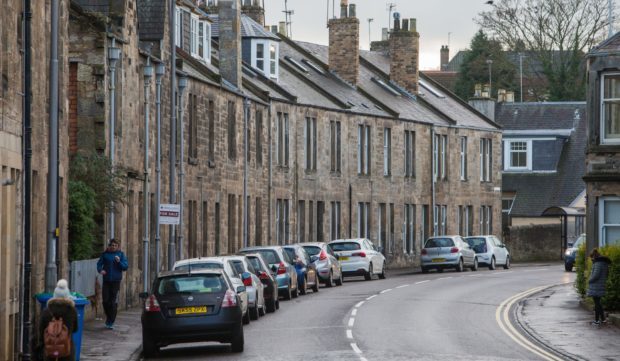New restrictions on houses in multiple occupation (HMOs) in St Andrews have been proposed to control the number of student lets in the town centre.
If approved, thresholds would be set and no new licences issued where the number of HMOs has reached its limit.
Townspeople and councillors have called for years for a new policy to deal with applications for new HMOs in the university town.
A proliferation of HMOs, which are typically let to students, has been blamed for creating areas with few permanent residents and problems with rubbish, neglect and antisocial behaviour.
Following an independent probe by North Star Consulting and Review, Fife Council’s housing service has advised that the threshold policy be adopted and will ask the north east Fife area committee on Wednesday to recommend it to the housing services committee.
A report by housing manager Vania Kennedy states: “The demand for HMO accommodation is particularly high in St Andrews from students, young professionals and people working away from home.
“A moratorium was introduced under planning policy to achieve a balance between the competing demands for accommodation and the need for a balanced community.
“Research suggests that the recent increase in the number of HMOs in St Andrews indicates it is not having the desired impact and an unintended consequence has been to push the provision of HMOs for students out from the centre to surrounding areas.”
Since the moratorium was introduced in 2011 the number of HMOs has increased by more than 11%.
The housing service rejected thresholds proposed by North Star, which it said had drawbacks, and came up with its own, dividing the town into three zones.
The policy would permit 18% to 22% of properties in the town centre to be HMOs, 6% to 10% in the east and 4% to 7% in the west.
The report said: “The aim is to protect traditional residential areas which are most favoured by the family market and permanent residents, and allow a certain level of HMOs in each part of the town.
“In practice, where the existing provision at the time of determining a proposal exceeds the threshold limit set, current licence holders would still be able to renew their licence and exemptions would also apply to the policy.
“However, there would be a general presumption that no new applications would be granted a HMO licence on grounds of overprovision where the thresholds have been exceeded.”
Consultation would be required before the new policy was adopted, and the current town centre moratorium would remain in place until then.









